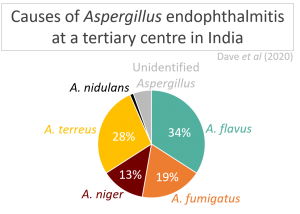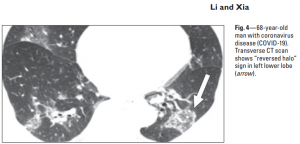Submitted by Aspergillus Administrator on 5 May 2020
Each moth we choose a handful of papers that stood out to us as highlights. Let us know if you think a particular piece of research should feature!.
Deep cutaneous fungal infections in solid-organ transplant recipients (Galezowski et al., 2020) This retrospective, observational, multicentre study was conducted in France to determine deep cutaneous fungal infections (DCFIs) diagnostic characteristics and outcomes with treatments in adult solid-organ transplant recipients. It describes the diversity and occurrence frequency of DCFIs. Phaeohyphomycoses were the most frequent DCFIs, representing a prevalence of 46%. Aspergillus species represented 8.7%.
Prevalence of fungal infection in nasal polyposis – A cross-sectional study, conducted at a tertiary care hospital in Karachi (Qaisar Sajjad et al., 2020) This cross sectional study, carried out from October 2010 to January 2015 on 221 patients in a tertiary care centre in Karachi was undertaken to determine the prevalence of fungal infections in nasal polyposis. Data was collected, a descriptive analysis was performed and a Computed Tomography (CT) grading was done. On the basis of histopathology, 90 (40.7%) patients were found to have fungal infection.
Functional characterization of clinical isolates of the opportunistic fungal pathogen Aspergillus nidulans (Bastos et al., 2020) Aspergillus nidulans has mainly been studied in the context of chronic granulomatous disease (CGD), with characterisation of clinical isolates obtained from non-CGD patients remaining elusive. This study reports a detailed biological characterisation of two A. nidulans clinical isolates (CIs), obtained from a patient with breast carcinoma and pneumonia and from a patient with cystic fibrosis that underwent lung transplantation, and compared them to the reference, nonclinical FGSC A4 strain. Differences in metabolic responses, growth rates and other strain-specific virulence traits and pathogenicity are described.
Diversity of secondary metabolism in Aspergillus nidulans clinical isolates (Drott et al., 2020) Despite its importance, there is little information about the natural diversity of secondary metabolism (SM) in A. nidulans. This paper describes six novel clusters that contribute to the considerable variation in both biosynthetic gene clusters content and SM production within A. nidulans. The authors emphasize that A. nidulans may also be a strong model to use within-species diversity to elucidate regulatory cross talk, fungal ecology, and drug discovery systems.
Exposure to mold proteases stimulates mucin production in airway epithelial cells through Ras/Raf1/ERK signal pathway. (Wu et al., 2020). This paper seeks to understand the underlying molecular mechanisms of airway obstruction and immune hyper-responsiveness caused by mucus overproduction in A.fumigatus induced lung diseases. It identifies and describes a novel downstream signal pathways that mediate A.fumigatus induced mucin production in airway epithelial cells. The discovery of this novel pathway contributes to the understanding of the pathogenesis of fungal sensitisation in allergic diseases such as fungal asthma.
News archives
-
Title
Date



